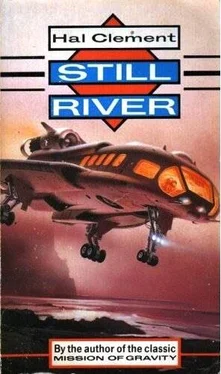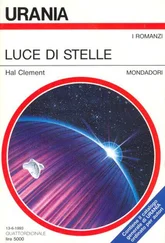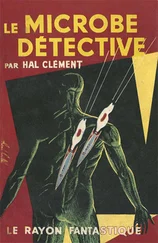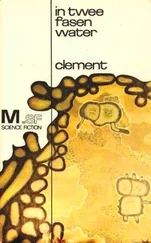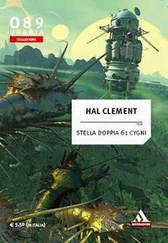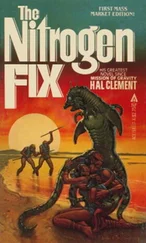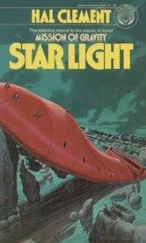Again Molly nodded. It was she who spoke this time. “Joe, can you take the time to stop and pry or kick loose a few of those polygons? We’d like to know where they go, and how fast.”
“Certainly. One to two minutes, please, while I check my armor.” Not even Charley made a sound this time.
“They are rather fragile.” The voice finally resumed. “Most of them break, no matter how carefully I try to detach them. They are attached to the substrate with some tenacity. Not enough to make them difficult to remove, but enough to make them hard to remove intact.”
“It doesn’t matter whether they break or not. The pieces will be just as useful. They aren’t falling, of course; but you didn’t report any floating around as you approached, so they must be leaving somehow. Which way are they going?”
“Toward the nearest tunnel mouth. They are being carried by the wind.”
“Right. Does your translator handle the word mud?”
“An approximation symbol comes through; I don’t know how it would return to you. Is slurry adequate?”
“Fairly. Mud would have less liquid and more viscosity, generally speaking, but I couldn’t give you a numerical boundary composition distinguishing the two. You’ve described a surface of mud that has dried, shrinking as it lost liquid, and some of the plates formed by the resultant cracking have been blown away. The rivers must get to the central hollow at some season or other of Enigma’s year…”
“First from one pole and then the other!” Charley interrupted gleefully. “I see. The mud season has passed, the mud left in the center has dried, and rivers are drying too under the hot wind. It makes sense.”
“Which does not necessarily make it true.” Molly felt she had to say it; it was more properly Joe’s line, but it was likely that he wouldn’t want to interrupt. This was neither emergency nor incipient quarrel. “I agree, Charley. A stratigraphic study of the mud should tell us a lot about Enigma—it might even contain enough organic remains to let us reconstruct the life history. For that matter, it might even tell us why the mud, when it does come, spreads out in a fairly smooth layer over this part of the inner surface, with what gravity there is tending to pull it toward the center.”
“Wind, of course,” remarked Charley. Molly glanced toward her small companion. The latter’s mouth was almost invisible even when she was not wearing armor, since her face did not include a chin, but silent lip motion could be discerned. Molly made a silencing gesture, and the Shervah nodded. Her friend went on, “I admit hydrogen bonds are stronger than gravity, but I have a very foggy mental picture there. The main point right now is that the mud flakes, when loosened, blow into the tunnels. There must be a lot of detritus there. Much of it may get reduced to the sort of powder we met blowing from the surface, much of it may get cycled through life forms, but some of it right now may be causing the trouble with Joe’s mappers.” “How?”
“I don’t pretend to know. With no gravity at all, practically speaking, it could hardly be any sort of tunnel collapse. You said there’d been some surface change. Just keep any eye on the passage walls as you go, Joe.”
“Most assuredly.” Joe was always happier with a working hypothesis around, even though he always expected it to need modification. “I’m entering the passage now.”
“Are the walls still mud? Do they show any stratification?”
“To the first, apparently yes. To the second, I can’t tell, Carol. I would expect to have to section the deposit to see.”
“I was wondering whether there might have been a river through that passage to do the sectioning. How such a system would behave in weightlessness I can’t guess. We’ll have to come back two or three decades from now and try to catch this place with water reaching the inside, at one or another of the poles.”
“I am sure that will be done. I wouldn’t mind being one of those to do it, but if I manage my Respected Opinion rating I’ll presumably be working somewhere else long before then.”
“You don’t have it yet, Joe?” Charley was clearly startled.
“Of course not. I was under the impression that none of us was even up to Considered Word. I did not, of course, inquire how far any of the rest of you had to go, but one more really successful project after this one—if this turns out as well as I’m beginning to hope—should satisfy my requirements. One must admit, of course, that a certain subjectivity occasionally shows in Faculty ratings, as even most Faculty members will concede, but one does not worry about facts beyond actual control.”
Charley made no comment. He might have wanted to, but Carol rather pointedly repeated her question about the composition of the walls surrounding the Nethneen. Joe returned to business. The passage still appeared to be winding its way through dried mud, though whether this represented a thin covering over rock or a bore through kilometers of sediment could not be told by simple inspection.
“I’d vote for lots of sediment,” Carol said thoughtfully “It’s an interesting bet whether this temporary hollow is going to fill first from rock creep or sediment transfer. There’s no way it can last indefinitely. Yes, I said creep, Molly.”
The mud itself was very salty and rather brittle; Joe stopped and emerged from his mapper long enough to ascertain these facts. He did not try to dig into it for any distance. The flare from his laser indicated, even to his eyes, that either the salt or the mud itself was very rich in sodium, but detailed information would have to wait until the fragments he collected reached the laboratory.
He had passed wind-borne flakes of what seemed to be surface mud other than those he had detached himself, and judged that the wind loosened these occasionally and bore them on up toward the outer surface. He wondered what would happen when gravity became strong enough to oppose the wind effectively for one of these, and began to get an inkling of what might be going on in the tunnels ahead. He thought of slowing his flight, then remembered the women and continued as he was.
The inactive branches were mostly well away from the inner surface, but one seemed to start less than twenty kilometers from the original passage mouth, measured along the route he had to follow. The path showed clearly enough in the computer model, but as he approached the indicated tunnel the Nethneen slowed somewhat and watched carefully ahead, using his mapper’s lights and radar as effectively as he could. He had now set his computer to warn of any change in the tunnel shape or topology by the same contrasting color technique. If he had done this somewhat earlier, he would have been spared inconvenience and anxiety.
Nothing gave any warning, however, for nearly another ten kilometers. Then he reached a section where, according to the model, there was barely enough room for his own vehicle to pass. Had there been too little, the small machines would have interpreted it as a dead end and stopped mapping, but they had gone on. Joe did the same.
He had become a little remiss by now in checking the details of the passage walls; Carol had stopped reminding him. Molly insisted afterward that it would have made no difference. Even she, used to winds and their peculiarities, would not have expected to foresee just what happened; Joe, from a practically airless world, would hardly have had a chance.
Joe himself insisted that Charley’s experience at the crater where Molly and Carol had entered the caverns should have been warning enough if he had kept properly alert.
He was never sure whether his vehicle actually brushed the loose mud of the passage wall as a result of careless piloting, or simply left such a narrow space for air to get by that the wind did the damage. Whichever happened, some of the sediment broke free, leaving a hole that gave the wind a real grip on the rest; and within seconds the passage ahead of him was full of blowing material ranging from fine dust grains to fist-sized clods. Joe’s unfortunate reaction was to cut power for a moment to let the stuff get ahead of him; it was blinding in both visual and radar wavelengths. Unfortunately, the local gravity was still less than three millimeters per second squared, and the wind was quite able to move the robot he was riding. The shuttle-shaped polymer hull, a meter and a half in diameter and five in length, twisted erratically, and first one pointed end and then the other struck the passage wall, gouging out more clay and salt before jamming in place. Large fragments flying from the original disturbance site struck it. Some of these pulverized and were blown past, other proved more resistant and in many cases got themselves jammed between hull and passage wall. Before the Nethneen had a clear idea of an appropriate maneuver, the wind had stopped, blocked by a new plug composed of freshly moved sediment and his own mapping machine.
Читать дальше
